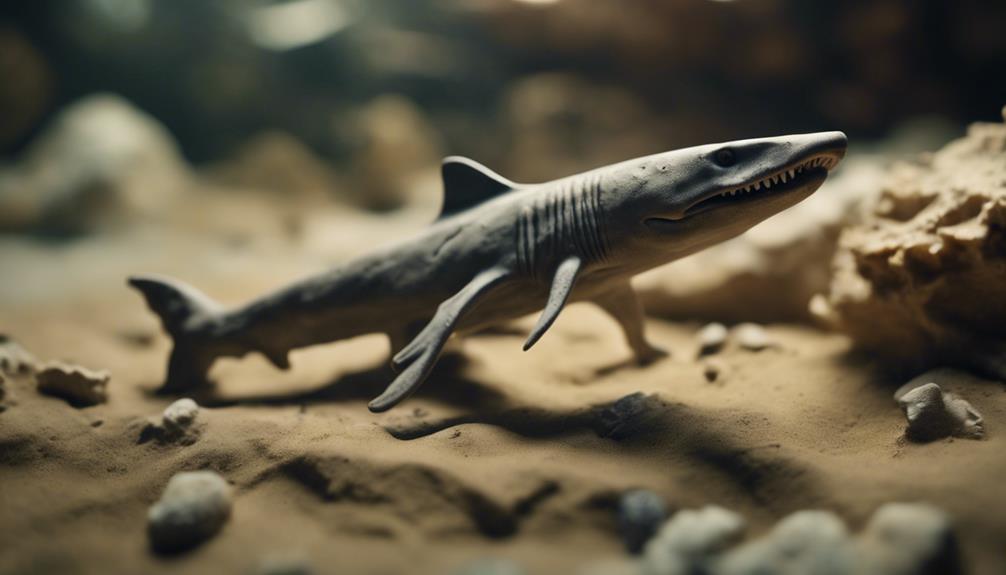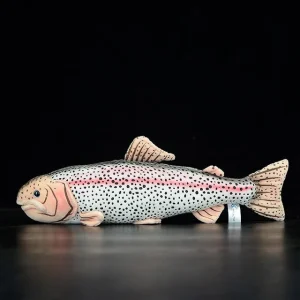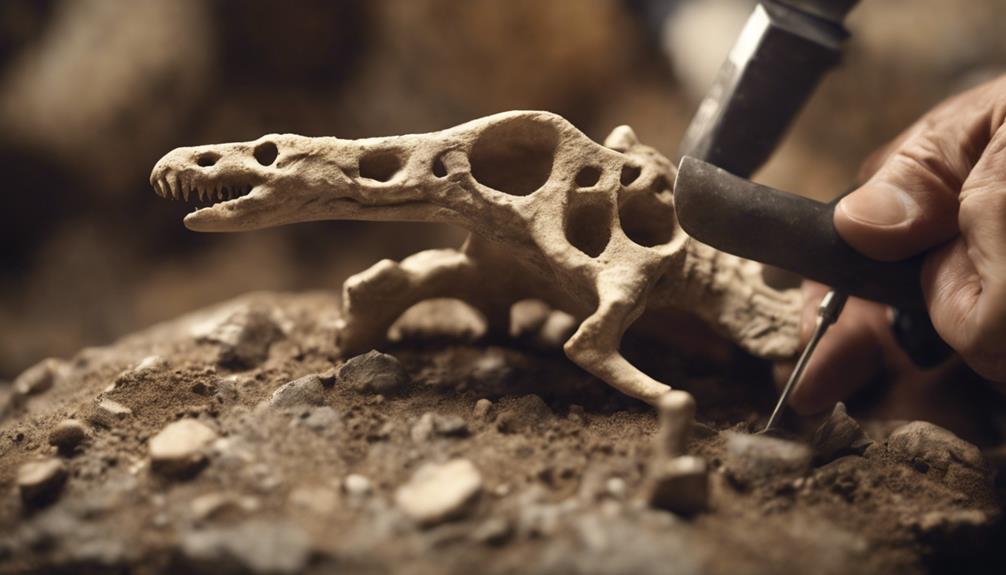Unravel the Mysteries of Diplocaulus: A Dive into Ancient Amphibian Evolution
Curious about the secrets behind Diplocaulus’ iconic boomerang-shaped head? Delve into the depths of history with us as we explore the enigmatic world of this prehistoric amphibian. Discover the evolutionary wonders and survival tactics that shaped Diplocaulus’ journey through time and space.
Benefits of Reading:
- Learn about Diplocaulus’ unique features and survival strategies
- Uncover the mysteries of an ancient era through this fascinating creature
Embark on a captivating journey as we unveil 10 intriguing facts about Diplocaulus, shedding light on its remarkable legacy in the ancient world. Ready to uncover the truth behind this extraordinary amphibian? Let’s dive in!
Key Takeaways
- Diplocaulus thrived in freshwater habitats with unique boomerang-shaped heads.
- Fossils from North America and Morocco reveal Diplocaulus’ distribution and evolutionary journey.
- Diplocaulus was a skilled predator targeting small fish and arthropods.
- Conservation of Diplocaulus fossils aids in studying Earth’s history and biodiversity.
Physical Characteristics and Unique Features
Diplocaulus stands out in the world of prehistoric creatures with its unique boomerang-shaped head and intricate skull features. The unmistakable shape of its head, with long rear protrusions, sets Diplocaulus apart from other ancient amphibians.
Its skull, adorned with elongated squamosal bones forming distinctive horns, is crucial for paleontologists to identify and classify different species of Diplocaulus, such as D. salamandroides, D. magnicornis, and D. brevirostris, each with their own skull features and distributions.
Paleontologists like E.C. Olson and E.C. Case have described specific species of Diplocaulus, including D. copei, D. pusillus, and D. primigenius, enriching our understanding of these fascinating creatures. Synonyms like D. limbatus have been attributed to certain Diplocaulus species, adding to the taxonomy puzzle.
Habitat and Distribution
Exploring the ancient world of the Late Carboniferous to Early Permian periods, Diplocaulus emerges as a fascinating inhabitant of freshwater marshes and swamps. This ancient amphibian thrived in aquatic environments, showing a clear affinity for water-based habitats. Fossils of Diplocaulus have been discovered in North America, especially in the United States, and in Morocco, providing valuable insights into its distribution.
The Diplocaulus‘ complete adaptation to aquatic life indicates a specialized habitat preference, highlighting its dependence on water ecosystems. Understanding the habitat and distribution of this species unlocks a window into the ecological niche it occupied millions of years ago. By delving into the regions where Diplocaulus once flourished, researchers can reconstruct a vivid image of the ecosystems this remarkable creature inhabited, enriching our knowledge of ancient aquatic life.
Diet and Hunting Behavior

Discover how Diplocaulus’ unique head shape revolutionized its hunting tactics and prey preferences. As a cunning amphibian predator, Diplocaulus leveraged its distinctive boomerang-shaped head to excel in ambush predation. This specialized approach enabled Diplocaulus to efficiently target diminutive fish and invertebrates, showcasing its agility and precision in freshwater environments. Although larger prey such as carp were beyond its grasp, Diplocaulus thrived as a skilled arthropod hunter. Its diet primarily consisted of these smaller creatures, underscoring its pivotal role as a top predator in its ecosystem.
Unveil Diplocaulus’ hunting mastery through the following insights:
| Hunting Behavior of Diplocaulus | |
|---|---|
| Prey Selection | Small Fish |
| Hunting Strategy | Ambush Predator |
| Habitat | Freshwater Marsh |
| Main Diet | Arthropods |
Dive into the world of Diplocaulus and witness how its unparalleled hunting skills shaped its ecological niche.
Reproduction and Lifespan
Discover the fascinating world of Diplocaulus, an ancient egg-laying amphibian that thrived in aquatic environments over 250 million years ago. These unique creatures entrusted their precious eggs to the water, although the exact details of their nesting habits remain a mystery. Sadly, the existence of Diplocaulus came to an end long ago, leaving behind intriguing clues about their reproductive behaviors and their unmistakable boomerang-shaped heads, possibly used to charm potential mates.
While we may never witness a living Diplocaulus, exploring their extinct species offers a captivating glimpse into the past. By understanding the life cycles of these ancient beings, we gain valuable insights into the dynamics of prehistoric ecosystems. The legacy of Diplocaulus serves as a reminder of the ever-changing tapestry of life on Earth and the importance of preserving and studying our planet’s biodiversity.
Join us in unraveling the enigmatic story of Diplocaulus, an amphibian that once roamed the waters with its distinctive features, sparking curiosity and wonder among those who seek to understand the mysteries of our planet’s past.
The Frilled Shark as a ‘Living Fossil

The Frilled Shark, known as a ‘living fossil’ due to its ancient lineage, boasts unique physical traits that reflect its deep-sea habitat and evolutionary past. Its long, eel-like body and rows of needle-like teeth showcase primitive features that provide a glimpse into history. The Frilled Shark’s distinct frilly gill structure sets it apart, hinting at a lineage that stretches back through time.
These elusive creatures, seldom encountered by humans in their natural environment, offer a fascinating look into the gradual process of evolution in the deep sea. Their extraordinary appearance and slow reproductive rate offer valuable insights into not just shark evolution but also the adaptations of other marine species that have thrived in the ocean’s depths.
Conservation Status and Human Impact
Preserving fragile Diplocaulus fossils is crucial for scientific research and historical significance. These fossils aren’t just ancient artifacts; they’re windows into a world long past, offering valuable insights into the mysteries of our planet’s history.
By creating 3D models of Diplocaulus, we can enhance our understanding and ensure the preservation of these remarkable creatures. These models serve as invaluable tools for researchers and enthusiasts alike, allowing us to explore and appreciate the unique anatomy and behavior of Diplocaulus in ways never before possible.
As an extinct species, Diplocaulus holds a special place in Earth’s history. Studying these amphibians helps us piece together the puzzle of prehistoric ecosystems, shedding light on how life evolved and thrived in ancient times.
Ongoing conservation efforts are essential for the continued study and appreciation of Diplocaulus. By safeguarding these fossils, we’re preserving a legacy that enriches our understanding of the natural world and inspires future generations to value and protect our planet’s biodiversity.
Encounters With the Frilled Shark

Exploring the depths of the ocean unveils fascinating encounters with the frilled shark, a mysterious deep-sea dweller. With its long, eel-like body, distinctive frilly gill slits, and rows of needle-like teeth, the frilled shark stands out as a truly unique and primitive creature. Inhabiting the dark realms between 600 to 1,500 meters below the surface, these sharks are like living relics from ancient times, showcasing primitive features that harken back to prehistoric eras.
Spotting a frilled shark is a rare and exhilarating experience, given their elusive nature in the deep ocean. These encounters offer a tantalizing peek into a world that remains largely uncharted, where enigmatic and ancient-looking creatures still roam freely. By preserving delicate fossils like the Diplocaulus, we gain invaluable insights into scientific history and unravel the mysteries of our past.
Through these encounters with the frilled shark, we’re reminded of the wonders that lie beneath the surface of our oceans, waiting to be explored and understood.
Evolutionary History and Adaptations
Exploring the evolutionary journey of Diplocaulus unveils a captivating story of adaptation and triumph in ancient aquatic environments. From its origins as lobe-finned fishes, Diplocaulus embarked on a remarkable transition from water to land habitats, showcasing the marvels of evolution.
The distinctive boomerang-shaped head of Diplocaulus conferred it with exceptional hydrodynamic advantages, propelling its graceful movement through water with ease. Fossil records meticulously trace Diplocaulus’ evolutionary trajectory, underscoring its specialized adaptations for thriving in aquatic realms.
Diplocaulus’ signature tabular horns served as efficient hydrofoils, facilitating its adept navigation through water columns, a testament to its evolutionary prowess. By studying Diplocaulus’ interactions with fellow species, we gain invaluable insights into the intricate tapestry of ancient ecosystems, showcasing the interwoven nature of prehistoric life forms.
Unveiling the secrets of Diplocaulus’ evolutionary saga not only enriches our understanding of the past but also offers inspiration for our own journeys of adaptation and growth.
Deep-Sea Adaptations and Survival

Dive into the fascinating world of Diplocaulus and its incredible deep-sea adaptations that showcase the power of evolution in extreme environments. Imagine a creature with a head shaped like a hydrofoil, designed for swift and efficient swimming in the deep waters. This unique feature enabled Diplocaulus to navigate the underwater realm with ease, making it a master of its aquatic domain.
One of the most remarkable adaptations of Diplocaulus was its ability to store air in its head, allowing for extended stays beneath the waves. This clever strategy was essential for evading predators and hunting prey in the challenging deep-sea habitats it called home. The Diplocaulus‘ specialized head shape not only served as a tool for navigation but also as a key to survival in the mysterious depths of ancient oceans.
The combination of these specialized adaptations paints a vivid picture of Diplocaulus‘s evolutionary journey towards mastering underwater survival. Its ability to thrive in the depths of prehistoric oceans is a testament to the resilience and ingenuity of this remarkable creature. Join us in exploring the wonders of deep-sea evolution and the extraordinary adaptations that have shaped life beneath the waves.
Prehistoric Comparisons and Ancestral Resemblance
Unveiling the Fascinating Journey of Diplocaulus and Its Evolutionary Resemblance to Modern Salamanders
Delve into the captivating world of Diplocaulus, where scientists have unearthed remarkable similarities with present-day salamanders, illuminating a shared evolutionary path. Here’s a breakdown of the key points to ponder when exploring the prehistoric connections and ancestral likeness of Diplocaulus:
- Ancestral Resemblance: Diplocaulus exhibits a striking similarity to modern salamanders, hinting at deep evolutionary ties.
- Evolutionary Origins: Fossil findings point to resemblances between Diplocaulus and lobe-finned fishes, underscoring their evolutionary roots.
- Insights into Amphibian Evolution: Research suggests that studying the prehistoric parallels of Diplocaulus provides valuable insights into the evolution of amphibians.
- Ancient Aquatic Links: Analyzing Diplocaulus’ characteristics reveals ancestral connections to ancient aquatic creatures.
- Tracing Amphibian Lineage: Understanding the prehistoric similarities of Diplocaulus aids in tracing the lineage of amphibians throughout evolutionary history.
Embark on a journey through time with Diplocaulus, where the past intertwines with the present, offering a glimpse into the mesmerizing tapestry of evolution.
Threats and Vulnerabilities

Understanding the vulnerabilities of Diplocaulus offers valuable insights into the challenges this ancient creature encountered in its ecosystem. Sporting its unique boomerang-shaped head, Diplocaulus faced threats from larger predators and intense competition with other aquatic species.
Its susceptibility to environmental changes, such as variations in water quality and habitat destruction, could have posed significant risks to its survival. Climate shifts impacting freshwater habitats and food sources may have added to its struggles. While its stout, stingray-like body may have offered some protection, the environmental vulnerabilities presented formidable obstacles to Diplocaulus‘ existence.
Research and Conservation Efforts
Exploring the latest scientific research and conservation initiatives highlights the vital importance of understanding and safeguarding Diplocaulus fossils for future generations.
- Cutting-edge 3D models provide detailed insights into Diplocaulus anatomy, facilitating in-depth species analysis.
- Conservation endeavors are dedicated to preserving the remains of these ancient amphibians, safeguarding them from decay and loss.
- The extinction of Diplocaulus underscores the pressing need for conservation efforts to protect Earth’s historical treasures.
- By studying Diplocaulus, we gain valuable knowledge about the interconnections between past ecosystems and modern biodiversity.
- Preserving Diplocaulus fossils is crucial for unraveling the evolutionary journeys of ancient amphibians.
These ongoing efforts not only enrich our understanding of the past but also inspire us to cherish and protect the wonders of our natural world for generations to come.
Rare Sightings and Encounters

Exploring rare Diplocaulus sightings and encounters opens a fascinating window into the ancient world and the remarkable adaptations of this prehistoric amphibian. These incredible creatures roamed the Earth over 250 million years ago, and through the discovery of their fossils, we gain valuable insights into their bygone existence. By studying Diplocaulus remains, scientists piece together the puzzle of its behavior and interactions in the distant past. Unearthing Diplocaulus fossils is pivotal in reconstructing the Permian ecosystem, offering a glimpse into the adaptations and preferred habitats of this intriguing species.
Despite their extinction, these infrequent glimpses of Diplocaulus fossils continue to enrich our understanding of ancient times and the diverse array of life forms that once populated our planet. Each fossil tells a story, shedding light on the long-lost world these creatures inhabited. It’s through these rare encounters that we can marvel at the beauty and complexity of life on Earth millions of years ago.
Deep-Sea Mysteries and Discoveries
Exploring Diplocaulus Fossils: Unveiling Deep-Sea Wonders
Dive into the mesmerizing world of Diplocaulus fossils unearthed in North America and Morocco, offering captivating glimpses into the ancient deep-sea realms this fascinating creature once called home.
- Diplocaulus’s fossils hint at a thriving existence in deep-sea havens bursting with diverse life forms.
- Its underwater lifestyle hints at a vibrant ecosystem bustling with enigmatic creatures of the past.
- The unique boomerang-shaped head likely served as a remarkable adaptation for underwater survival and hunting prowess.
- By feasting on small fish and invertebrates, Diplocaulus illuminates the intricate food chains within ancient deep-sea environments.
- Delving into these fossils uncovers the intricate web connecting ancient inhabitants of deep-sea ecosystems, painting a vivid tableau of marine life millions of years ago.
Embark on this riveting journey through time and discover the wonders of Diplocaulus and its deep-sea domain.
Implications for Marine Conservation

Exploring the implications for marine conservation through the lens of Diplocaulus fossils opens a window into ancient marine ecosystems. This highlights the urgent need to protect underwater habitats to safeguard biodiversity and prevent species extinction.
By studying Diplocaulus fossils, we uncover valuable insights into past marine ecosystems, underscoring the conservation needs of present-day marine habitats. Understanding how Diplocaulus interacted with other species provides crucial information for devising strategies to protect species diversity and ensure ecosystem health.
The extinction of Diplocaulus serves as a poignant reminder of the importance of preserving marine habitats to halt further species loss. Research on Diplocaulus behavior not only offers a glimpse into ancient ecosystems but also provides guidance for modern conservation efforts aimed at ensuring the sustainability of marine ecosystems.
Frequently Asked Questions
What Are Some Interesting Facts About Diplocaulus?
Diplocaulus, an ancient amphibian, sported a unique boomerang-shaped head and hunted small fish with an ambush strategy. Fossils discovered in North America and Morocco reveal insights into their habitat. Extinct but intriguing, Diplocaulus offers a peek into prehistoric life.
Who Discovered Diplocaulus?
You discovered Diplocaulus! Edward Drinker Cope found this ancient amphibian in 1880, shaping our knowledge of prehistoric life. Cope’s identification of Diplocaulus unveiled a new species, enriching the study of ancient creatures and habitats.
Did Diplocaulus Live in Water?
Yes, Diplocaulus did live in water. This fascinating prehistoric creature thrived in aquatic environments over 250 million years ago. Its unique anatomy and adaptation to water habitats make it a captivating subject of ancient study.
How Long Ago Did Diplocaulus Live?
Over 250 million years ago, Diplocaulus lived, showcasing a unique boomerang-shaped head and eel-like tail movement. These ancient amphibians thrived in habitats of small Paleoniscid fish, offering a glimpse into the past and ancient life forms’ behaviors.
Conclusion
As you reflect on the remarkable journey through the ancient world of Diplocaulus, you’re left with a newfound appreciation for the intricate web of life that once thrived beneath the waves. The captivating facts and mysteries surrounding these prehistoric creatures offer a glimpse into the rich tapestry of marine ecosystems that have shaped our planet. With each discovery comes a deeper understanding of the importance of conservation efforts to preserve the wonders of our natural world for future generations to marvel at.
For more fascinating facts about other intriguing creatures, check out these Grandeuria Articles:





